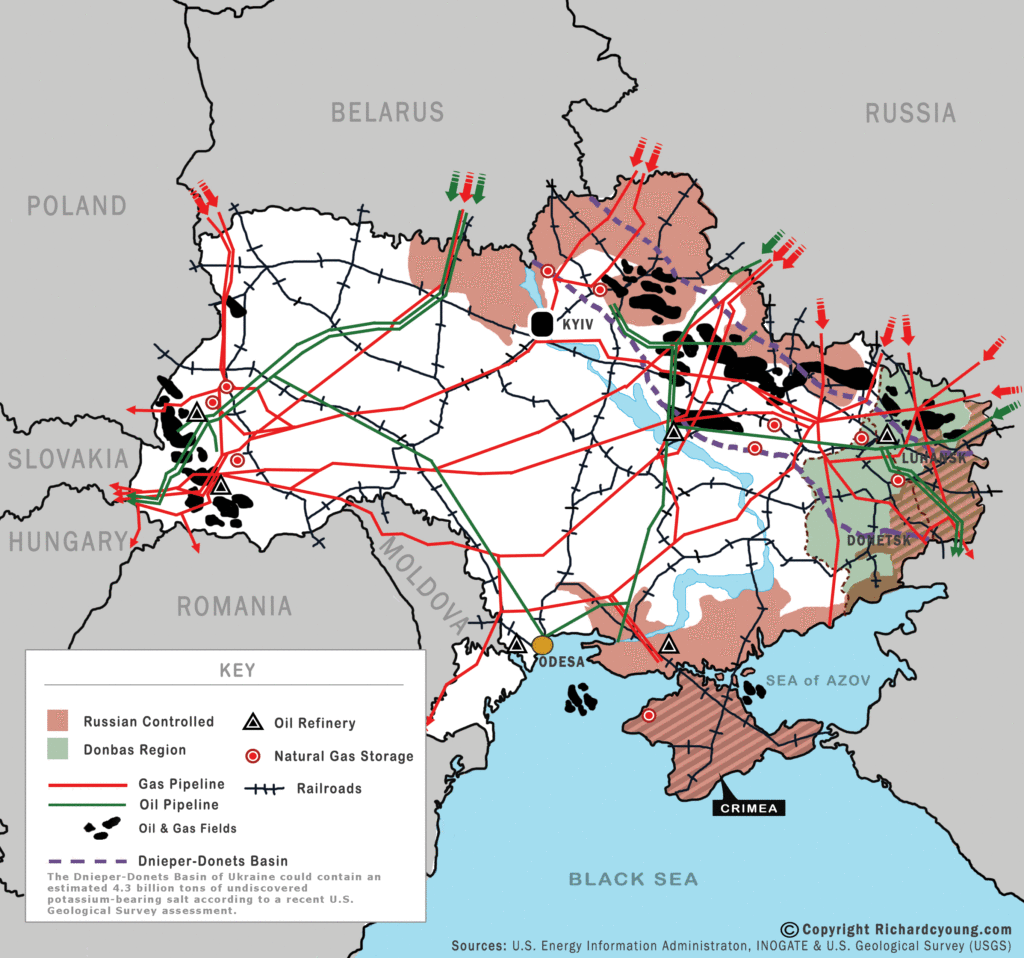Coverage of the war in Ukraine suggests that the Ukrainian military has created a logistics nightmare for Russia with seemingly minimal efforts. Ukrainian troops appear to have targeted high value fuel trucks in order to stymie the advance of Russian tanks and APCs relying on their cargos. The Ukrainians also destroyed vital bridges and railways to deny their use to the Russians as routes for resupply. This effort also appears to have created choke points for Russian columns, making them vulnerable to further attack.
Across the country, Ukrainians have taken down or painted over street signs and disrupted and blocked radio frequencies Russian forces use for communications. Retired Lt. Col. Alex Vershinin, a former modeling and simulations officer in concept development and experimentation field for NATO and the U.S. Army with 10 years of frontline experience in Korea, Iraq, and Afghanistan, believes Russia’s truck logistic support is limited to 90 miles from its supply dumps. He writes (bridged):
Russia’s truck logistic support, which would be crucial in an invasion of Eastern Europe, is limited by the number of trucks and range of operations. It is possible to calculate how far trucks can operate using simple beer math. Assuming the existing road network can support 45 mph speeds, a single truck can make three trips a day at up to a 45-mile range: One hours to load, one hour to drive to the supported unit, one hours to unload, and another hour to return to base. Repeating this cycle three times equals 12 hours total. The rest of the day is dedicated to truck maintenance, meals, refueling, weapons cleaning, and sleeping. Increase the distance to 90 miles, and the truck can make two trips daily. At 180 miles, the same truck is down to one trip a day. These assumptions won’t work in rough terrain or where there is limited/damaged infrastructure. If an army has just enough trucks to sustain itself at a 45-mile distance, then at 90 miles, the throughput will be 33 percent lower. At 180 miles, it will be down by 66 percent. The further you push from supply dumps, the fewer supplies you can replace in a single day.
The Russian army does not have enough trucks to meet its logistic requirement more than 90 miles beyond supply dumps. To reach a 180-mile range, the Russian army would have to double truck allocation to 400 trucks for each of the material-technical support brigades.
Russia’s failed logistics operation in Ukraine has the Pentagon looking into the importance of ‘contested logistics.’ Speaking at the NDIA Pacific Operational Science and Technology Conference in Hawaii, Under Secretary for Research and Engineering Heidi Shyu said, “Looking at the logistics problems the Russians are having. It’s a contested logistics environment. It’s not even that contested — it could be a lot more contested, a lot more difficult. So, we truly want to focus on that area,” she said. Jaspreet Gill of Breaking Defense writes (abridged):
The Pentagon will soon begin the planning stages of the second “sprint” of a new joint experimentation initiative on track to take place in fiscal 2024, the Defense Department’s chief technology officer recently said, focusing in part on “contested logistics.”
Speaking at the NDIA Pacific Operational Science and Technology Conference in Hawaii, Under Secretary for Research and Engineering Heidi Shyu pointed to Russia as an example of how important the oft-overlooked area can be.
“Looking at the logistics problems the Russians are having. It’s a contested logistics environment. It’s not even that contested — it could be a lot more contested, a lot more difficult. So we truly want to focus on that area,” she said.
Steve Schneider
Latest posts by Steve Schneider (see all)
- New Chinese Electromagnetic Surveillance Leaves “Nowhere to Hide” on Battlefield - March 15, 2024
- Amazon’s Nuclear Powered Data Center - March 7, 2024
- Skunk Works Rolls Out An Engineering Marvel - March 6, 2024
- Future of Airpower Takes First Flight - March 4, 2024
- A War Beneath the Waves – Trillions of Dollars at Stake - February 9, 2024
















